We’ve all heard it a million times: “There aren’t enough hours in the day.” Time management has long been heralded as the solution to our increasingly busy lives. But what if the real challenge isn’t managing our minutes and hours? What if the key lies in reframing our perspective, shifting from a narrow focus on time to a holistic approach that encompasses all our resources? Join us as we explore the overlooked dimensions of productivity and unveil strategies that extend beyond the confines of a ticking clock. Dive deep into understanding the real resources you should be managing, and discover how a comprehensive approach can lead to a more balanced, fulfilled life. Welcome to a new era of resource mastery. 🕰️➡️💡
About the Author
In her previous career as a university-level writing instructor, Dr. Stephanie Weaver taught hundreds of first-year college students not just about citations and sentence structure but also about how writing gets done. She’s passionate about helping people find the writing practices and strategies that work for them to accomplish their writing goals.
Energy Management: When Time Isn’t the Only Currency
When your work is mostly measured in terms of tasks completed rather than hours clocked, you might begin to notice that “time management” isn’t exactly about time.
I began to realize this with my first full-time teaching position, when I was teaching four sections a semester with a total of 76 students and over 3,000 pages of student writing to read. The workload felt overwhelming, but it wasn’t because of the time it took to read and comment on those papers. It was about the energy and focus required to do the work and to do it well. Time management wasn’t the sticking point. Energy management was.
Energy management isn’t just about whether you’re a morning lark or a night owl. Energy management is more about noticing patterns or cycles in your energy levels throughout the day and week (or even month) and using that to your advantage. Instead of trying to shoehorn yourself into someone else’s routine, you find the routine that works for you.
I’m going to use myself as an example here. I’m a night owl by nature, but my highest energy point is usually when I first wake up. The actual time I wake up might vary, but that 2-3 hours right after waking up is a real golden time for focused, high-intensity work. I’ll hit a 3 pm slump, then get another energy surge around 8 or 9 pm.
I figured this cycle out by making an effort to notice it and by taking notes (Rowena Tsai’s video on this was incredibly helpful). Now that I understand these key features of my energy cycle, I can use them to plan my day to maximize my energy and do all the things I want to be doing.
First of all, I stopped showering in the mornings. Because those first few hours are so precious and because I’ll get completely derailed if I stop for mundane things like hygiene (thanks, ADHD), I now go directly from my bed to my desk (and, yes, a lot of times I am still in my pajamas). I’ll take a few minutes to brain dump onto some paper, roughly map out my day, then get straight to the task that requires the most focus, which is usually drafting (as opposed to grant searches or setting up templates or other parts of the grant writing process.) I’ll break for lunch, then move into less focus-intensive work, like meetings or sorting through grant opportunities. When I start to hit that 3 pm slump, I’m finishing up my work day by wrapping up projects, answering any emails I haven’t gotten to yet, and making notes for the next day.
When I sign off for the day at 4 pm, I’ll either crash on the couch with a video game or a book for a little while or I’ll move onto a physical activity — exercise, housework, one of the endless list of projects that goes with moving into a new house, etc. I’ll take a shower and have dinner with my partner, and then around 8 pm, I’ll usually pick up one of my hobby activities that requires focus, like planning a new sewing or knitting project or working on a TTRPG campaign. This evening energy surge is a double-edged sword; I have to cut myself off between 10 and 11 if I want to be asleep before 1 am.
Of course, my routine is contingent on a few different factors. I can only go from bed to desk like I do because I’m a remote worker. I’m able to work 8 am to 4 pm because I have some flexibility with my hours. Plus, my partner and I don’t have children that place demands on my time — just a pair of senior cats with very strong opinions about when breakfast should be served.
But because I have this freedom, I used to think there was so much more I should be able to do in the morning. After all, if you start talking about finding the time to do something, one of the first solutions that people will come up with is to just wake up a half hour earlier and do it then. Once I stopped trying to do what I thought was a “good morning routine,” I became significantly more productive because I cut straight to the chase when my energy was at its highest. Some people need a little more time to ease into their days, and that’s totally fine too. The goal here is not to find the perfect routine — it’s to identify ways you can set up your work to match your natural energy cycle.
Here’s a few steps for identifying your own energy cycles.
1. Take a week (or two weeks or a month) to do observations. Create an hour-by-hour table with space to write down what you’re working on, how you feel, and a number for your overall energy level. Try to vary the kind of work you do at each time of day so that you don’t get confused by that one vampire task that always drags you down.
2. Identify key trends and experiment. Once you’ve collected some information, try to identify some key trends. When do you feel really on top of things? When do you find yourself struggling to focus? When do you seem to get hungry? Once you’ve found when your energy peaks are, try experimenting with what kinds of tasks you do during those peaks. If you can do a variety of things without losing that energy, great! You’ve found your golden work time! If doing something different seems to drain the energy away, great! You’ve found a task that energizes you and you can schedule that at a low energy point in your day.
3. Build a daily and weekly rhythm. Once you’ve identified your energy peaks in your day, take a look at your week. Start trying to pair difficult tasks with high energy times. Pay attention to days or weeks where you feel satisfied or accomplished at the end of them, and use those as models to build a skeleton routine.
4. Be flexible. The fact is that our work – whether that’s work you get paid for or work you just have to do as an adult – can’t always be put off until we reach an energy peak. But you can be kind to yourself when you’re struggling to get something done during what you know is a low energy time, like doing the task from a comfy spot or treating yourself to a nice snack or water in your favorite glass.
And honestly, this self-kindness is one of the biggest results from switching my thinking from time management to energy management. We may all have the same hours in a day, but we don’t all have the same energy levels, and we don’t necessarily have the same energy levels from day to day. Acknowledging our own limitations and identifying our own patterns is the first step toward creating a system that lets us accomplish all the things we want to get done.

Dive into our “Write Your Grant in One Hour Using AI” course. It’s packed with video tutorials, a digital workbook, and a cheatsheet to guide you through the AI-driven grant writing process. 🎓
Our next live grant writing workshop for the course is Thursday, November 2 at 12:00 PM Central Time (US and Canada), so make sure you join us by then inside the course!
Don’t miss out on this chance to stay at the forefront of grant writing and harness the power of AI to enhance your grant writing process.






